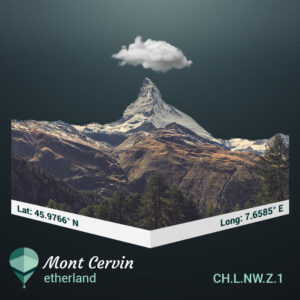 Often described as a mountain straight out of a fantasy book, le Mont Cervin, also called Matterhorn, is the 12th highest peak in Western Europe and the 10th highest in Switzerland, topping at 4,478 meters. The mountain started its formation 100 million years ago when continental plates collided into each other, causing the ground to rise and giving the peak its unique shape. In fact, its picture may be familiar as the mountain gave its image to the famous Toblerone logo.
Often described as a mountain straight out of a fantasy book, le Mont Cervin, also called Matterhorn, is the 12th highest peak in Western Europe and the 10th highest in Switzerland, topping at 4,478 meters. The mountain started its formation 100 million years ago when continental plates collided into each other, causing the ground to rise and giving the peak its unique shape. In fact, its picture may be familiar as the mountain gave its image to the famous Toblerone logo.
The Mont Cervin, also called Matterhorn, is a peak of the Alps Mountain range, which lies on the border between Switzerland and Italy. Although it is not the highest peak in the Alps – that honor goes to Mount Blanc – it is as well-known or more so owing to its shape. It consists of a nearly symmetrical pyramidal peak with four distinct sides facing almost precisely toward the north, south, east, and west of a compass. These faces are extremely steep and have made the monument particularly difficult to ascend to the top of.
The name of the mountain peak has changed over time and differs depending on which country one is in. The Matterhorn is derived from the terms of the two villages nearest the mountain, Mattertal, and Zermatt, but prior to this, it was known as Mons Silvius. This is a Latin name which probably originates in a Roman commander by the name of Silvius having led his men near the mountain at some point as the Romans were conquering this part of Europe in the second and first centuries BC. It is from this latter Roman name that the modern-day French and Italian names for the peak of Cervin and Cervino are derived.
The Matterhorn is one of the most difficult mountains in Europe to ascend due to its sheer and steep mountain faces and the variable weather patterns around the monument. Abrupt weather changes can create very dangerous conditions for mountaineers. Consequently, the first significant efforts to ascend to the top of the peak were not made until the 1860s, and when they were they ended in failure and loss of life. Eventually, the north face was surmounted in 1931, and, somewhat incredibly, it took until 1962 before the west face, the steepest and highest of the four sides, to be climbed to the top. This was completed by Renato Daguin and Giovanni Ottin some nine years after Mount Everest had already been conquered by Edmund Hillary and Tenzing Norgay, a clear indication of how difficult it is to traverse the Matterhorn. Yet, with the advent of modern equipment, portable oxygen, and security apparatus, the monument is much easier and safer to climb than in times gone by. As a result, in the summertime today, when weather conditions generally permit, up to 150 mountaineers make the ascent each day.